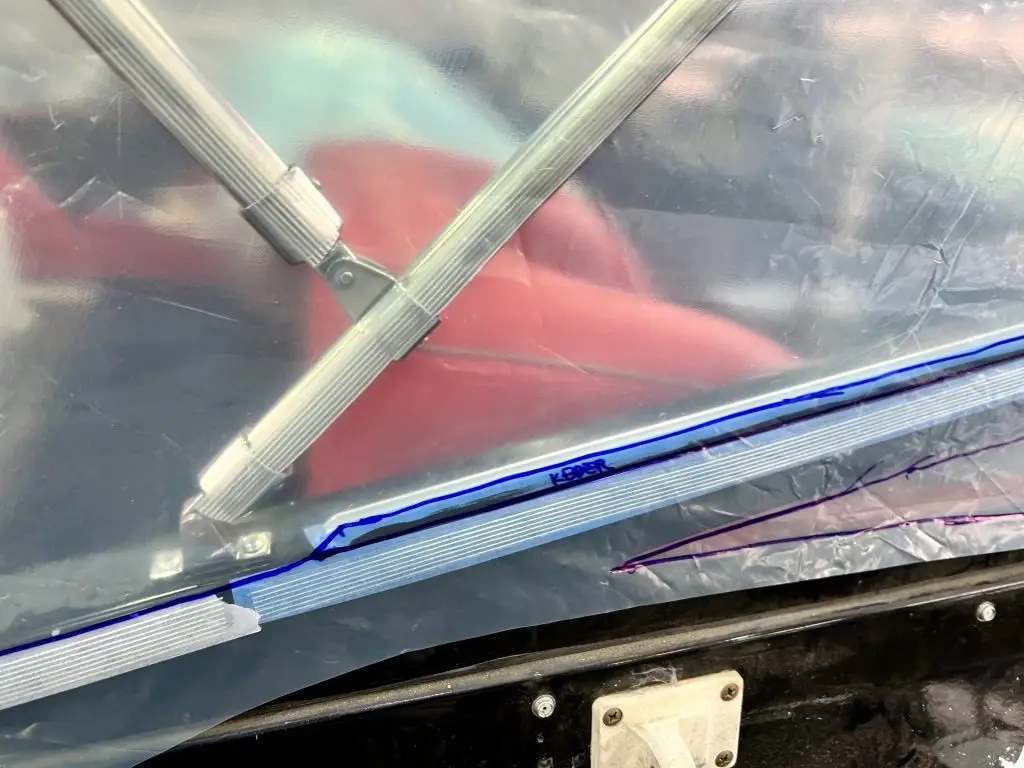When it comes to crafting the perfect boat cover, the focus often falls on the final material – the durable canvas, the breathable acrylic fabric or the sleek vinyl. But there’s a crucial behind-the-scenes player that deserves recognition: tapes – masking tape and double sided tape. Yes, that humble roll of adhesive plays a vital role in the templating process, ensuring a snug and secure fit for your boat cover.
This blog delves into the world of tapes used in boat cover templating, exploring their unique properties and ideal applications. From the familiar masking tape to the industrial-grade armored tape, we’ll equip you with the knowledge to choose the right tape for your DIY project or professional templating needs.
The Essential Toolkit: A Guide to Templating Tapes
1. Masking Tape: The Foundation
Masking tape is a household staple, readily available and beloved for its gentle adhesive properties. Here’s why it’s a good starting point for templating:
- Gentle on Surfaces: Masking tape removes easily without leaving any residue on your boat’s delicate finish. Great for initial measurements and sketching out the basic cover shape. We always use blue Tesa masking tape as a base layer on any templating job. We opt for blue or outdoor tape, because some tapes stay on the boat for weeks, until the cover is ready and installed.
- Conforms Easily: The pliable nature of masking tape allows it to conform to curves and angles on your boat, ensuring a good initial template outline.
- Multiple Applications: Beyond templating, masking tape can be used for labeling fabric pieces, holding patterns in place while cutting, or creating temporary seams for testing fit.
Limitations:
- Limited Strength: Masking tape isn’t designed for long-term wear or holding heavy materials. Strong winds or movement could detach the template during the process. That’s why we add second layer of filament tape on top of masking tape.
- Not Weatherproof: Rain or moisture can compromise the adhesive properties of masking tape, making it unsuitable for outdoor templating projects, unless you use for blue Tesa. Don’t use regular DIY store yellow(ish) tape, even if it’s 3 times cheaper.
2. Strapping Tape: The Heavy-Duty Champion
For boat cover projects, fiber reinforced strapping tape comes into play in many ways. This industrial-grade tape offers the following benefits:
- Superior Strength: Engineered for demanding applications, strapping tape features a powerful adhesive that holds firmly to even rough surfaces. Ideal for securing stainless steel frames, large templates and heavy fabric pieces.
- Weatherproof: Strapping tape withstands harsh weather conditions, including rain and wind. Even if we try to select calm day for templating – this is not always the case and conditions may be far from ideal. Then the strapping tape comes into critical role to keep everything in place.
- High Tear Resistance: Strapping tape resists tearing or ripping, ensuring the integrity of your template even during handling or movement.
- Very Good Adhesive Properties: Strapping tape is the crucial layer between masking tape and double sided tape, creating a much better grip for double sided tape to keep all templating pieces in right place. Even if we work outside and there is light wind.
Limitations:
- Difficult Removal: Removing strapping tape can be very challenging, and it might leave a significant residue on your boat’s surface. That’s why we always always use it in second layer on top of the masking tape.
3. Double-Sided Tape: The Team Player
Double-sided tape offers a unique solution for specific templating applications. Here’s where it can be helpful:
- Temporary Holding Power: Double-sided tape provides a temporary bond between two surfaces, allowing you to easily reposition templates or fabric pieces during the initial stages of templating. This can be particularly useful when working with intricate details or complex curves. It works well on strapping tape and between the different layers of templating material. Typically we use transparent plastic for templating.
- Optimal is The Best: For optimal performance use Tesa double sided tape. But, be careful to choose right combination of templating plastic and double sided tape. Test before. If the tape is too soft, it will not hold the templating pieces together, if it’s too strong and plastic is too thin, then it’s impossible to make any corrections and small changes. The tape will just hold too strong and you will break the plastic if you want to make corrections. Max everything is also not ideal, because thicker plastic materials are not good for tight corners and maight be too heavy for larger templating parts.
Limitations:
- Limited Strength: Double-sided tape is not designed for long-term use or holding heavy materials. That’s why always mark all your marks to all template layers.
- Not Suitable for All Surfaces: The adhesive properties of double-sided tape might not work effectively on all boat surfaces, especially those with a rough texture or oily residue. Tesa double sided tape can be used directly on stainless steel parts, all other surfaces use masking tape + strapping tape + double sided tape.
With the right tape by your side, you’re well on your way to crafting a custom boat cover that provides superior protection and a snug fit for your pride and joy. Now, get out there, explore the different material options and get started on your templating project! If you prefer to have a cocktail and go sailing, then you know who to call:)

